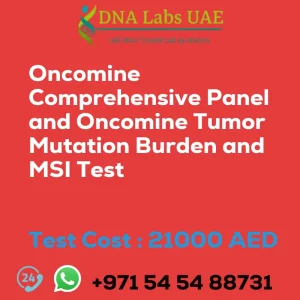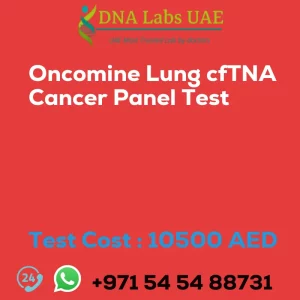TORCH Panel Real Time PCR Test
Test Name: TORCH Panel Real Time PCR Test
Components: EDTA Vacutainer (2ml)/ Sterile Container
Price: 1200.0 AED
Sample Condition: Cord Blood/ Amniotic Fluid
Report Delivery: 2-3 days
Method: Real Time PCR+End point PCR
Test Type: Genetics
Doctor: Gynecologist
Test Department:
Pre Test Information: TORCH Panel Real Time PCR can be done with a Doctors prescription. Prescription is not applicable for surgery and pregnancy cases or people planning to travel abroad.
Test Details:
The TORCH panel is a group of tests that are commonly performed using real-time polymerase chain reaction (PCR) technology. TORCH stands for Toxoplasma, Rubella, Cytomegalovirus, and Herpes simplex virus, which are four infectious agents that can cause congenital infections in newborns.
Real-time PCR is a molecular biology technique used to amplify and detect specific DNA or RNA sequences in a sample. It allows for the rapid and accurate quantification of target sequences, making it a valuable tool for diagnosing infectious diseases.
In the context of the TORCH panel, real-time PCR is used to detect the presence of the Toxoplasma, Rubella, Cytomegalovirus, and Herpes simplex virus in a patient’s sample. The test involves isolating the genetic material of these pathogens from the sample and amplifying it using PCR. The amplification is monitored in real-time using fluorescent probes, allowing for the quantification of the target sequences.
Real-time PCR offers several advantages over conventional PCR methods. It provides faster results, higher sensitivity, and greater specificity. Additionally, it allows for the simultaneous detection of multiple pathogens in a single test, making it a cost-effective and efficient diagnostic tool.
Overall, the TORCH panel using real-time PCR is a valuable diagnostic tool for identifying congenital infections caused by Toxoplasma, Rubella, Cytomegalovirus, and Herpes simplex virus. It provides accurate and timely results, allowing for appropriate medical interventions to be initiated for affected newborns.
| Test Name | TORCH Panel Real Time PCR Test |
|---|---|
| Components | EDTA Vacutainer (2ml)/ Sterile Container |
| Price | 1200.0 AED |
| Sample Condition | Cord Blood\/ Amniotic Fluid |
| Report Delivery | 2-3 days |
| Method | Real Time PCR+End point PCR |
| Test type | Genetics |
| Doctor | Gynecologist |
| Test Department: | |
| Pre Test Information | TORCH Panel Real Time PCR can be done with a Doctors prescription. Prescription is not applicable for surgery and pregnancy cases or people planing to travel abroad. |
| Test Details |
The TORCH panel is a group of tests that are commonly performed using real-time polymerase chain reaction (PCR) technology. TORCH stands for Toxoplasma, Rubella, Cytomegalovirus, and Herpes simplex virus, which are four infectious agents that can cause congenital infections in newborns. Real-time PCR is a molecular biology technique used to amplify and detect specific DNA or RNA sequences in a sample. It allows for the rapid and accurate quantification of target sequences, making it a valuable tool for diagnosing infectious diseases. In the context of the TORCH panel, real-time PCR is used to detect the presence of the Toxoplasma, Rubella, Cytomegalovirus, and Herpes simplex virus in a patient’s sample. The test involves isolating the genetic material of these pathogens from the sample and amplifying it using PCR. The amplification is monitored in real-time using fluorescent probes, allowing for the quantification of the target sequences. Real-time PCR offers several advantages over conventional PCR methods. It provides faster results, higher sensitivity, and greater specificity. Additionally, it allows for the simultaneous detection of multiple pathogens in a single test, making it a cost-effective and efficient diagnostic tool. Overall, the TORCH panel using real-time PCR is a valuable diagnostic tool for identifying congenital infections caused by Toxoplasma, Rubella, Cytomegalovirus, and Herpes simplex virus. It provides accurate and timely results, allowing for appropriate medical interventions to be initiated for affected newborns. |








